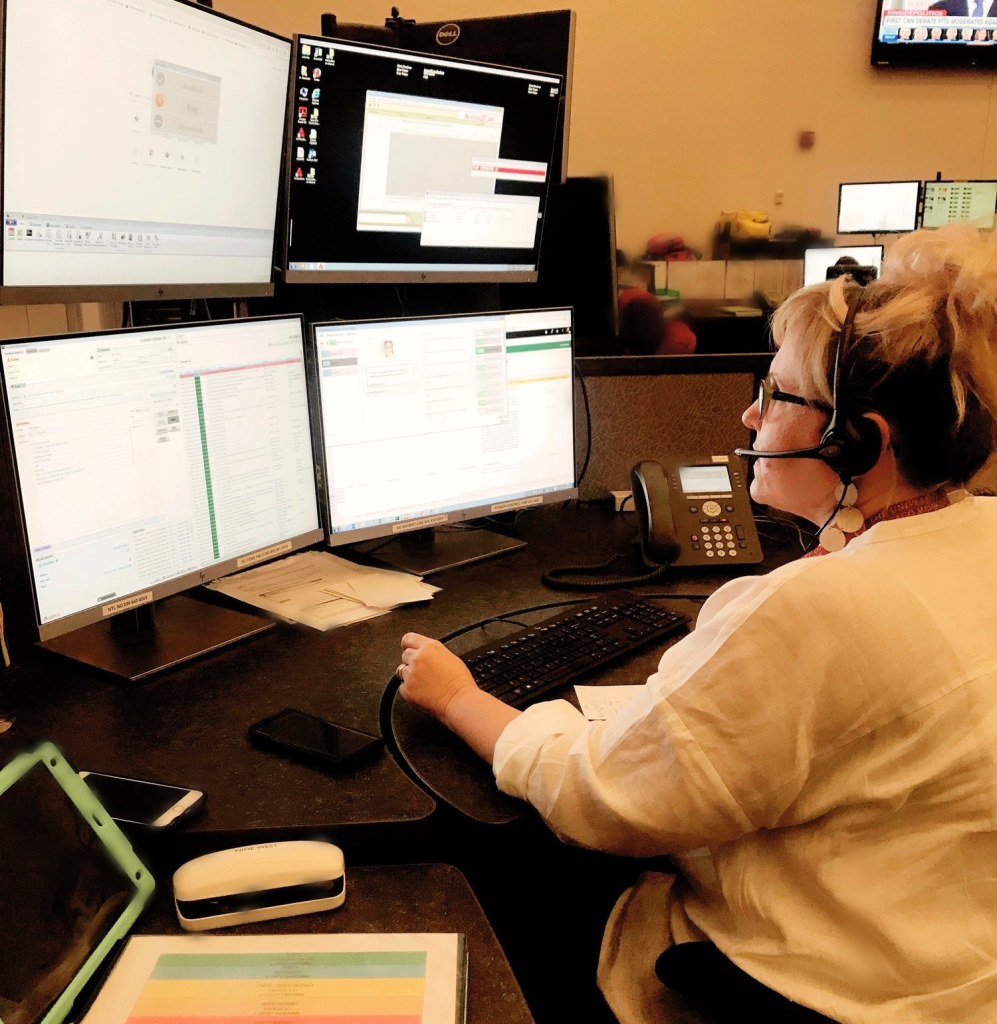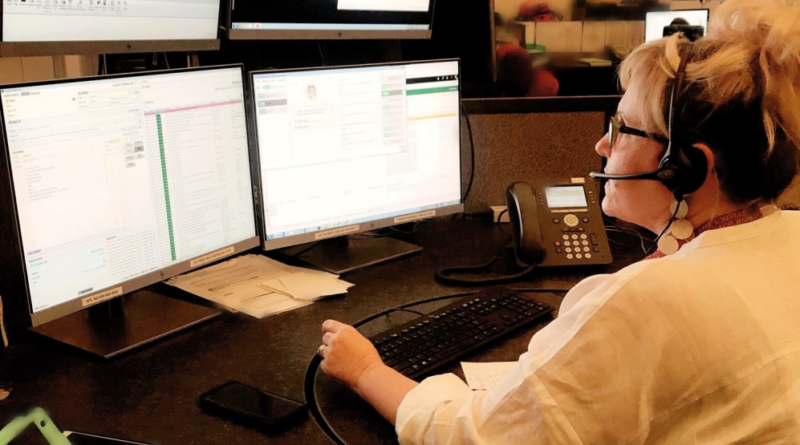How nurse-led triage connects DC 911 callers to the right care – McCourt School of Public Policy
Researchers from Georgetown University, American University and The Lab @ DC found that placing a nurse in a 911 call center reduced stress on the County’s emergency services.
According to DC’s Office of Unified Communications (OUC), the District’s 911 call center is one of the busiest in the country, historically ranking behind New York City, Chicago and Los Angeles. In 2023, OUC received more than 1.7 million 911 calls for service, including more than 3,000 calls requiring CPR instructions.
Dr. Rebecca Johnson, assistant professor at Georgetown University’s McCourt School of Public Policy, and Dr. Ryan T. Moore, assistant professor at American University’s School of Public Affairs (AU SPA), collaborates with District Government researchers at The Lab @ DC. , where they were both selected, to evaluate the effectiveness of a unique project that connects 911 people with non-life-threatening symptoms to appropriate care.

Proper Care, Currently a nurse on duty. (Credit: DC Office of Communications)
Under Proper care, Now program, a dispatcher at a District 911 call center or a Department of Fire and Emergency Medical Services (FEMS) first responder transfers non-emergency calls to paramedics over the phone, advising callers of Where can I find care nearby or arrange for non-emergencies? transport. Eligibility for a nurse triage call is determined by an approved list of chief complaints, including indigestion, sunburn and flu-like symptoms.
The DC government aims to help conserve resources for serious emergencies and reduce pressure on an already overstretched system by effectively triaging emergency and non-emergency callers.
Johnson, who joined the investigative team Proper care, Now In the fall 2019 program, he was asked to participate in this project based on his experience in administrative data analysis and research experience in the complex American health care system. As a data scientist at The Lab @ DC, Johnson obtained and analyzed administrative data from agencies across DC Government to evaluate program effectiveness. He and his colleagues later produced a report to help local leaders and policy makers understand the impact of the program and the benefits provided to the residents of the District.
“I bring the lessons I learned from my work at The Lab @ DC to my McCourt course, such as using the challenges I’ve faced and management information as inspiration for problem groups to evaluate the learning of my students,” said Johnson, who teaches data science. in the McCourt School’s Master of Science in Data Science for Public Policy program and is a member of the McCourt School’s Massive Data Center.

Dr. Rebecca Johnson is an assistant professor at Georgetown University’s McCourt School of Public Policy and a data scientist at The Lab @ DC.
Moore, a senior social scientist at The Lab @ DC since 2016, helped design and develop the nursing intervention study from the beginning.
“This is an exciting project; demonstrates the tremendous societal impact that deep, meaningful collaborations between policymakers and academics can have when we join forces for high-quality research,” said Moore, who teaches statistical methods and data science in the Department of Government at AU SPA in partnership with the AU Center for Information Science.

Dr. Ryan T. Moore is an assistant professor at American University’s School of Public Policy and a senior social scientist at The Lab @ DC.
Strong results after nurse-led assessment of 911 calls
After analyzing the program’s impact on callers from April 2018 to January 2019, Johnson, Moore and co-researchers found that the number of calls that resulted in an ambulance dispatch dropped from 97% to 56%, and those resulting in ambulance transport decreased from 73% to 45. %.
Emergency department visits within 24 hours of calling 911 decreased among Medicaid beneficiaries from 29.5% to 25.1%, and the number of callers who visited a primary care physician the core rose from 2.5% to 8.2%.
Short-term results suggest that nurse-led screening of non-emergency calls can safely connect callers to appropriate, timely care. The potential long-term impacts on emergency department and primary care visits or Medicaid costs remain unclear and will be the subject of future research.
Nature Human BehaviorA leading peer-reviewed scientific journal, published the research team’s study in May 2024. Co-authors include Drs. Kevin Wilson, Dr. David Yokum and Dr. Chrysanthi Hatzimasoura, former members of The Lab @ DC, and Dr. Robert Holman, DC FEMS longest serving medical director, who was instrumental in launching the research study.
“Academic journal articles are never very motivating for us, but the publication of our findings in a prominent journal should give the District’s residents confidence that important decisions about their city are informed by the best available methods. science,” said Sam Quinney, director of The Lab. @DC.
Since its launch in 2018, the Proper care, Now The program has evolved from a pilot effort into a successful program delivering impressive results in the District. Six years ago, Dr. Holman said dispatchers and DC FEMS first responders fielded about 75,000 non-emergency 911 calls and directed about 35,000 callers to appropriate care, such as emergency clinics. basic and urgent, self-care. , telehealth or home visits by non-executive EMS personnel rather than emergency departments.
Learn more about how paramedics improve care at the County’s 911 call center here.
#nurseled #triage #connects #callers #care #McCourt #School #Public #Policy
